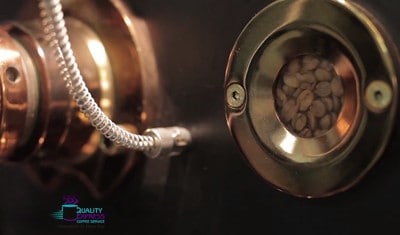How To Make Roasted Coffee
 Roasting Coffee for Perfect Flavor
Roasting Coffee for Perfect Flavor
If you assume the coffee roasting process can be boiled down to a couple baked beans, then you are sadly mistaken. This classic, highly respectable practice is done with the utmost precision, care and artistry.
Coffee roasters depend on their eyes, ears and sense of smell to create quality batches of light, medium and dark roasted beans. Their full attention to detail, combined with a tactful hand and wide open ear is what produces those delicious, beautifully rich, perfectly gourmet coffee blends. The roasting process is essentially what shapes the coffee you drink. It is the strength, the body and the flavor of your coffee; roasting is at the roots of your java.
The roasting process has many layers, all fascinating to behold. The smells that fill the room border on euphoric, and the transformation of the bean itself, in color, size and texture is pretty mind boggling.
Let’s check out the heating specifications and thermal process coffee beans go through when they’re roasting – there are three stages of development.
Round 1 (Light Roast)
In this first stage, Roasters are looking out for a “grassy” scent. What’s happening is all the moisture is being sucked out of the beans. The beans then begin to swell, changing colors from green to yellow to gold. Since the objective is a light roast, the beans should only darken to a tan or light brown. The key to completion is in the first crack. Once the beans have been heated long enough, they will crack, releasing all the heat they have just absorbed. This usually occurs when the beans hit 400 degrees inside. The first crack signals the light roast is done.
Round 2 (Medium Roast)
The period between the first crack (light roast) and second crack (medium roast) is crucial. It is at this time that sugars have started caramelizing within the roaster, which give the up and coming medium roast a richer body. Internally, the beans should now be at a nice 430 degrees, and ready for their second crack.
Round 3 (Dark Roast)
The second crack signals medium roast is done and dark roast is just beginning. Different shades of “dark” roast are created depending on how long they sit. For example, an Italian roast would be kept in the roaster a few minutes longer than a French roast.
Cooling
It is essential that the beans be cooled quickly and powerfully. If they continue cooking, or maintain any kind of heat, the texture, flavor and entire body will be ruined. Beans must be fully removed from heat as soon as they are removed from the roaster if flavors are to remain intact.
Coffee roasting is responsible for your favorite coffee, and the reason why it’s your favorite. The precision that goes into this process is really the difference between good and bad coffee. Even if you prefer weak coffee, roasting at an exact temperature for an exact amount of time is what gives you your weak coffee. Let’s all take a minute to thank the master roasters who pour such extreme amounts of attention into the beans that get blended, brewed and consumed, and shape our mornings the way we like it.
If you’re up for another coffee lesson, or you’re curious about how the Java Geniuses can create quality coffee for you, give us a call at 866-4-JAVA-2U or click below – our Cafe Lab is bustling with new brews all the time!
Are you looking for a quality office coffee delivery service? Our Java Geniuses are ready to bring quality coffee to your office, workplace or shop. Contact our team or call us at 866-452-8228

 Order Online
Order Online